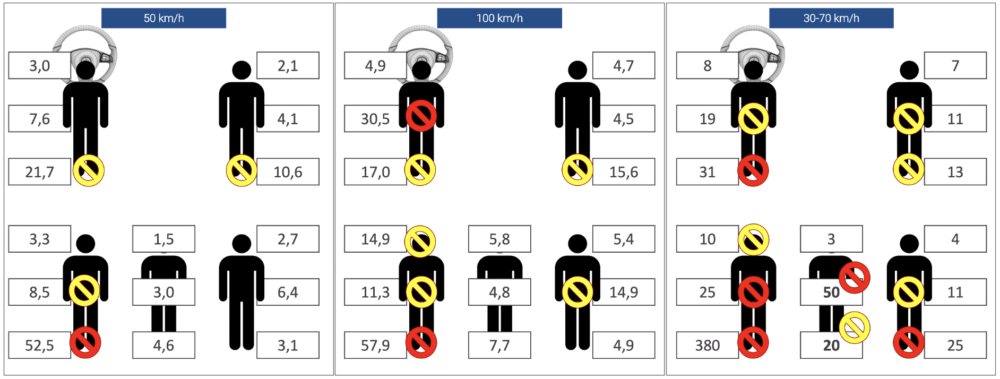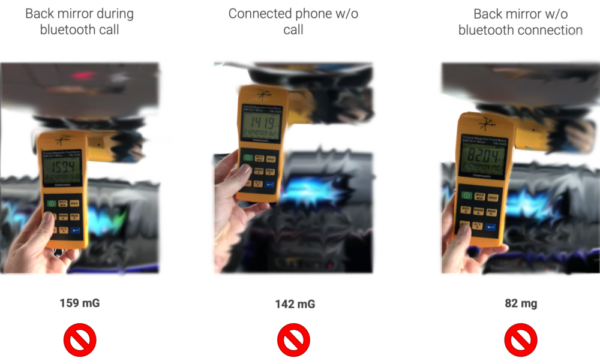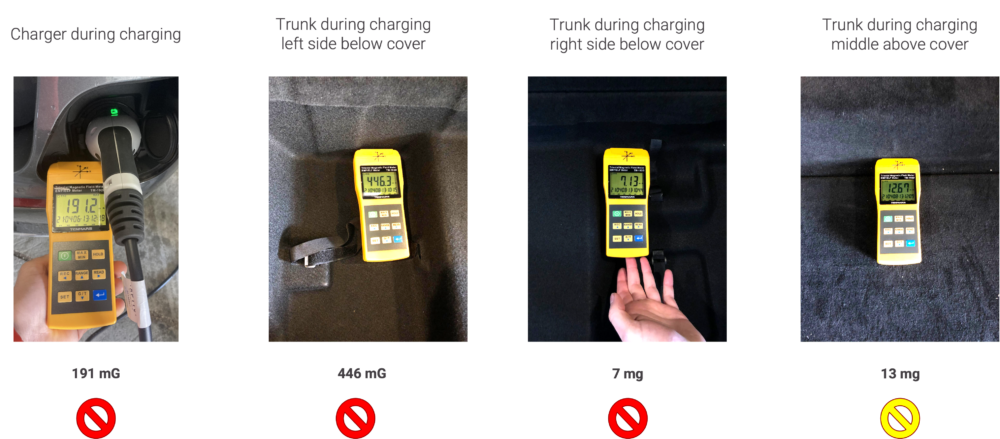e-mobility on the rise
The importance of climate protection is increasingly being recognised worldwide. An outstanding element on the path to the desired energy transition is electric mobility as part of sustainable mobility, which is being steadily expanded in Germany. The majority of the population associates electric vehicles primarily with environmental awareness and independence from fossil fuels. The focus is always on climate-friendly mobility and thus a positive view of this development. Critics, however, point out that electric vehicles could potentially pose a health risk. Read about what exactly electromagnetic fields (EMF) are and how we tested their impact with an experiment.
Electromagnetic fields in electric mobility
Despite all the advantages that electric vehicles can bring, if they are operated with sustainably generated electricity and the production and disposal of the batteries is efficient and climate-friendly, there is nevertheless a downside that should not be neglected. Whenever electricity is used, electric and magnetic fields are generated. When operating electric vehicles, for example, this occurs around the cables, the battery and the motor. When charging the electric vehicles, these electromagnetic fields also arise in a strength that cannot be neglected. Depending on where the battery is located in the vehicle, how the cables are laid and how the vehicle is constructed, the field strength of the radiation varies. Some vehicles record the highest field strength in the boot, others in the driver’s side footwell and still others in the back seat, where in case of doubt our children sit.
EMF – danger to life and limb?
The German Federal Office for Radiation Protection (BfS) emphasises that radiation protection must be the focus of attention when expanding electromobility in order to avert dangers to health. But what do these fields do to us humans? Why is it important to address this issue with all seriousness?
What makes the difference?
A distinction is made between electromagnetic fields in different areas. In static and low-frequency fields, the electric and magnetic components can be considered separately. In the case of high-frequency fields, these two components are closely connected. Therefore, one then speaks of electromagnetic fields. Low-frequency magnetic and electric fields can generate electric fields and currents in the human body. High-frequency electromagnetic fields can even heat biological tissue. The biological effect of magnetic, electric and electromagnetic fields on the body varies according to frequency, strength, duration of exposure and modulation. Individual characteristics, such as body size, and physical boundary conditions, such as grounding or orientation to the field, can also play a role in the extent of the biological effect. We humans have no sensory organs to perceive EMF, so electromagnetic fields can only be assessed by measuring methods. Measurements are made in the unit Gauss, which can be used to measure the intensity of the magnetic flux density.
Analysis suggests that average exposures greater than 3-4 milli Gauss (mG) may pose a risk to health. Studies have shown that chronic low-frequency exposure is associated with an increased risk of leukaemia and other health hazards. Other health effects include effects on personal behaviour, learning ability, the hormonal system or cell metabolism, as found in experiments with cell cultures, animals or humans.
How do EMF affect humans?
EMF belong to the category of non-ionising radiation. Short-term effects such as irritant effects (non-thermal effects) of low-frequency and static fields from 0-100 kHZ can have an irritant effect on sensory organs, nerves and muscles if they are above the irritation threshold. Static fields can also affect implants in the body and disrupt their function. High-frequency fields from 100 kHz to 300 GHz can absorb radiant energy in body tissue through thermal effects. In the range 100 kHz – 10 MHz, both irritation effects and heating effects can occur.
Radiation protection – limits and guidelines
The International Commission on Non-Ionising Radiation Protection (ICNIRP) published new guidelines for limiting exposure to electromagnetic fields at the beginning of the year. Although these guidelines are basically “only” equivalent to a recommendation and have no legal character, many countries are adopting them in the corresponding regulations. The World Health Organisation also recognises the ICNIRP, although it is only a registered association. The limit values for non-ionising radiation for the protection of people against damage to health in the Twenty-sixth Ordinance of the Federal Immission Control Act (26th BImSchV) are also based on the recommendations of the ICNIRP. The task of radiation protection is to set limits for the strength of fields that are so low that no damage to health occurs. The upper limit that is classified as harmless to human health is 4mG.
e-mobility and EMF
Electric vehicles include both purely battery-electric motor vehicles and hybrid electric vehicles. The electromagnetic fields generated by electric mobility range from 0 hertz to hundreds of kilohertz in the case of static fields to low-frequency fields and fields in the so-called intermediate frequency range. We at magility wanted to know exactly and started a self-experiment to find out how high the electromagnetic exposure is for us in the company car in everyday working life.
The EMF-experiment with our CEO’s company car
A hybrid vehicle from the upper luxury segment of a large German car manufacturer was tested. To obtain meaningful results on EMF, we measured the vehicle under various conditions:
- Testing for maximum values (speed/discharge and braking/recuperation).
- Checking the values at 50 km/h
- Checking the values at 100 km/h
- Detecting anomalies during parking
Throughout the test, we used a portable meter (Tv 3-Axis Emf Electromagnetic Magnetic Field Gauss Meter Tester) that displays the intensity of the field strength on the top of the meter. The field strength is measured in mG (milli-Gauss). The yellow device can be seen in the measurement photos. Hybrid vehicles have several parts with a particularly high voltage, such as the high-voltage battery or the HV charging socket.

The tests were carried out at three standardised positions per seat (head / back / floor), at different speeds and at different positions in the vehicle. The final values were assigned to three ranges and coloured as follows:
Category 1 – 0-7.9mg – Green
Category 2 – 8-23.9mg – yellow
Category 3 – >24mg – red
What was noticeable in the results: Passengers sitting behind the driver seem to be exposed to very high levels in this vehicle.



Overall, the lowest values were measured for rolling without braking or accelerating. High values were measured for the driver and passenger next to the combustion engine.
Even if our series of measurements does not yet claim to be a comprehensive, scientifically sound study, it does provide immensely important insights for dealing with the problem of EMF and proves a great need for action.
Our conclusion
We’ll let the results take effect for now, but we don’t feel quite as carefree when we’re on the road in our company car. We hope that radiation protection in electric and hybrid vehicles will become more of a focus in the future and have high hopes for the start-up VHOLA from our magility network, which is dedicated to this explosive topic and has developed solutions for the reduction of EMF in vehicles.
If you have any questions about our experience or enquiries about studies in this area, please do not hesitate to contact us. Our magility experts look forward to discussing the topic of EMF with you, to discussing and presenting solutions and to developing new business models together with you.



